Importance of Roof Tarps
for Property Protection and Insurance Compliance
Installing roof tarps on a property is crucial for safeguarding against damage caused by hail storms, wind storms, hurricanes, and other severe weather conditions. Not only does it protect the property and its contents, but it also plays a significant role in meeting insurance company requirements and avoiding claims of negligence. After a storm, immediate roof inspections are vital to identify any potential leaks or vulnerabilities.
I. Importance of Roof Tarps:
- Roof tarps act as a temporary protective barrier that prevents further water intrusion, minimizing potential damage to the property.
- They help preserve the structural integrity of the roof until permanent repairs can be undertaken.
- Roof tarps limit exposure to external elements, such as rain, debris, and UV radiation, reducing the risk of secondary damage.
- By securing the property promptly, roof tarps prevent potential losses due to water damage, mold growth, and compromised structural elements.
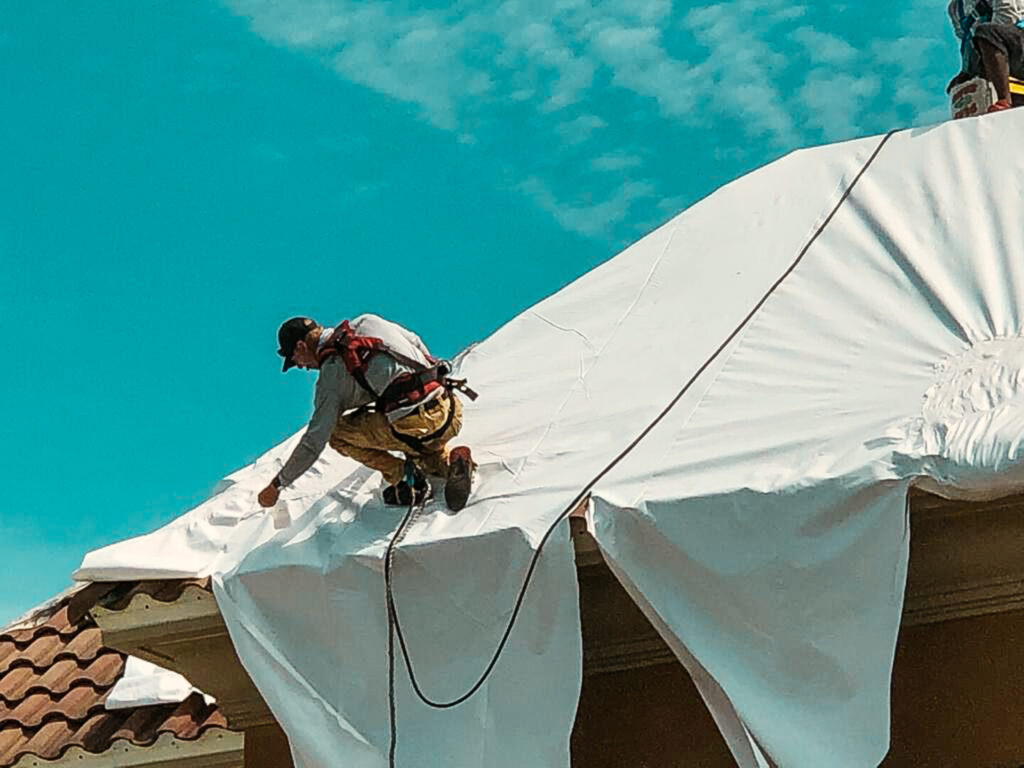
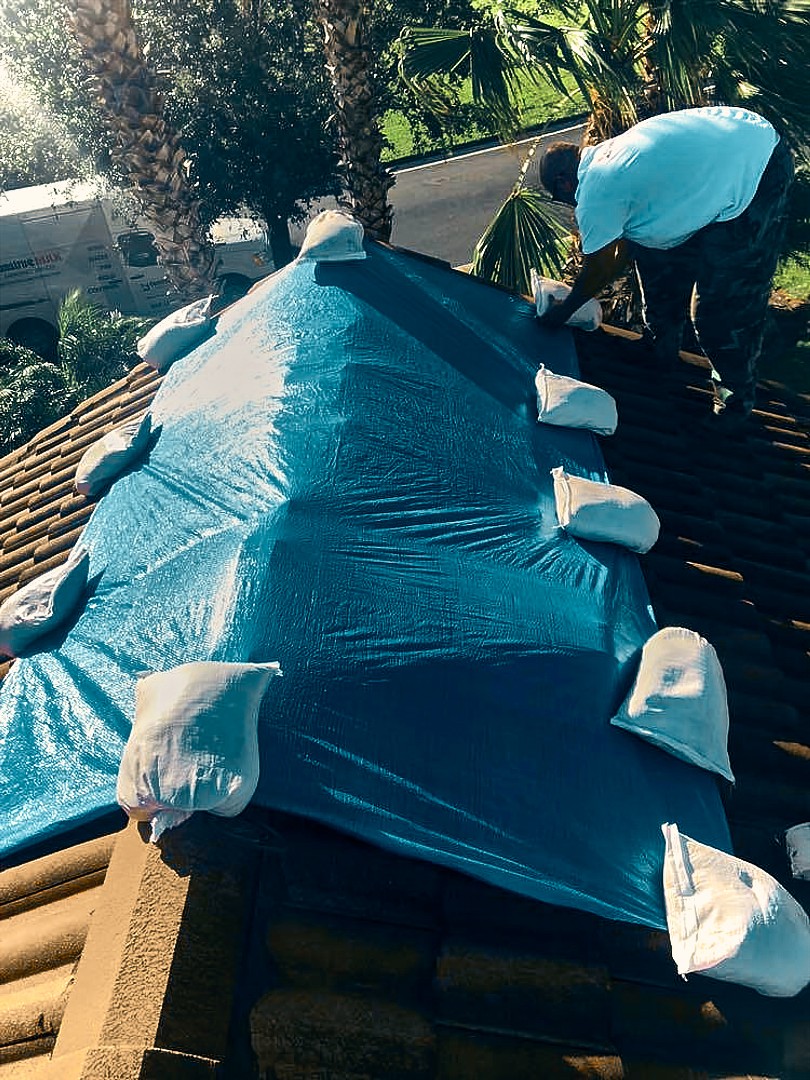
II. Compliance with Insurance Requirements:
- Many insurance companies require property owners to take reasonable steps to mitigate damage after a storm. Installing roof tarps demonstrates proactive measures to protect the property.
- Compliance with insurance requirements helps ensure that claims are processed smoothly and promptly, avoiding potential delays or denials.
- By promptly securing the property with roof tarps, property owners can demonstrate responsible risk management, which may lead to more favorable insurance coverage and premiums.
III. Post-Storm Roof Inspections:
- After a hail storm, wind storm, or hurricane, it is essential to conduct a thorough roof inspection, even if no immediate signs of damage are apparent.
- Roof inspections help identify hidden or underlying issues that may not be immediately noticeable, preventing potential long-term damage.
- Timely inspections provide an opportunity to document any damage that may be covered by insurance, facilitating the claims process.
- It is advisable to hire a professional roofing contractor or inspector with experience in storm damage assessments for accurate evaluations.
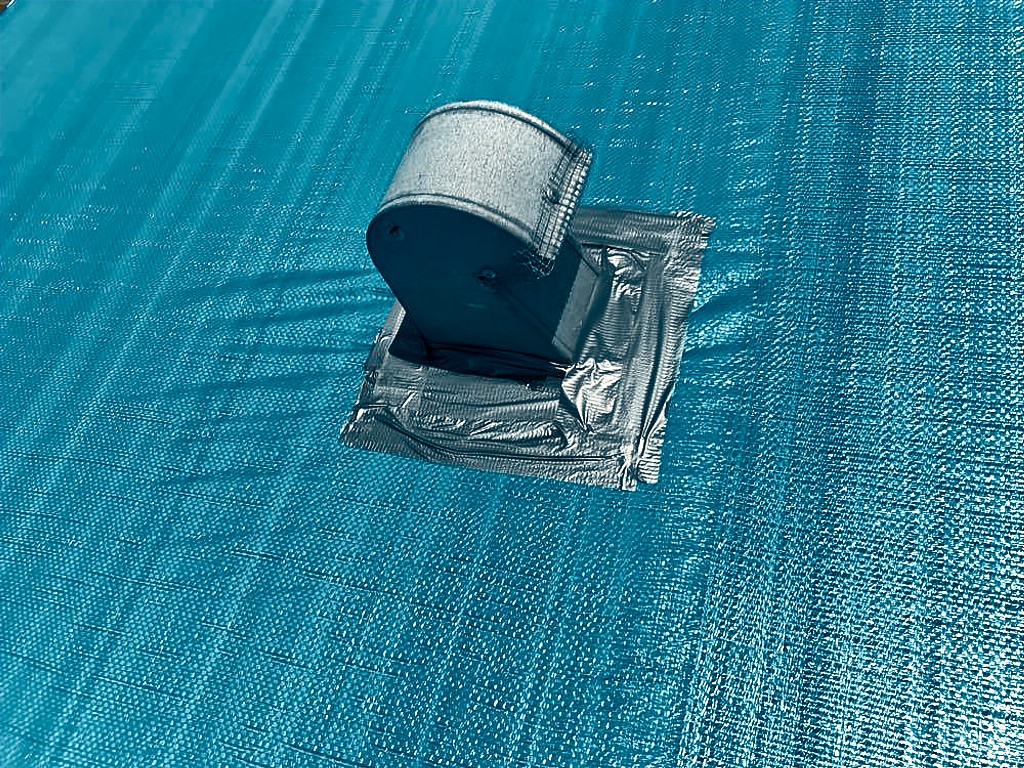
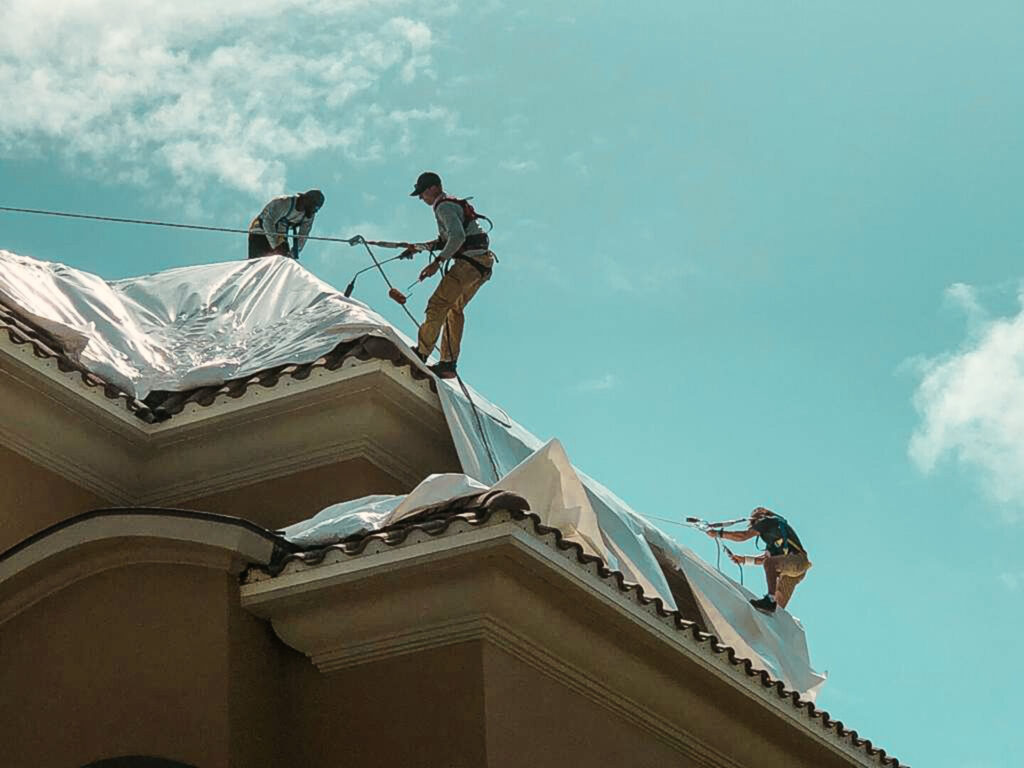
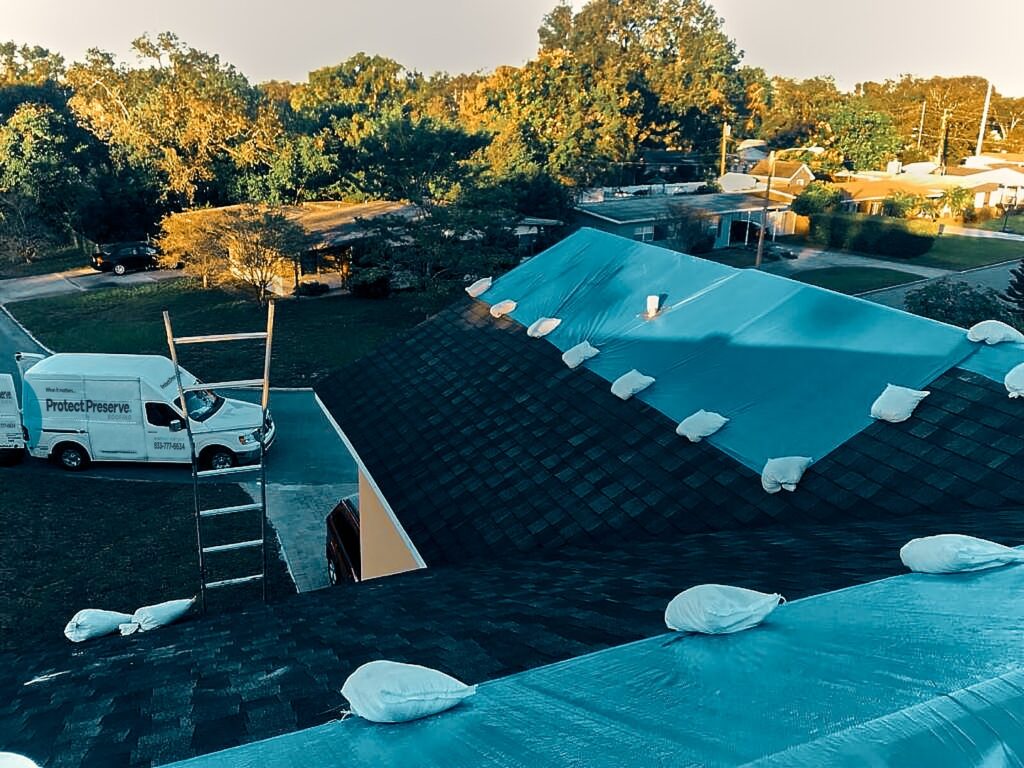
Do's
- Do install roof tarps promptly after a storm to minimize further damage.
- Do ensure that roof tarps are securely fastened and cover the entire damaged area effectively.
- Do document the installation process with clear and professional photographs for insurance purposes.
Don'ts
- Don’t delay in installing roof tarps, as it may lead to additional damage and complications.
- Don’t compromise on the quality of the roof tarps. Choose durable, weather-resistant materials for effective protection.
- Don’t attempt to inspect or repair the roof without proper safety precautions and expertise. Seek professional assistance if needed.
Conclusion: Installing roof tarps is a crucial step in protecting properties from storm damage and ensuring compliance with insurance company requirements. It helps minimize potential losses, facilitates smoother claims processes, and showcases responsible risk management. Following a storm, conducting thorough roof inspections is necessary to identify any underlying damage. By adhering to the do’s and don’ts outlined above, property owners can effectively protect their assets and mitigate further complications.



